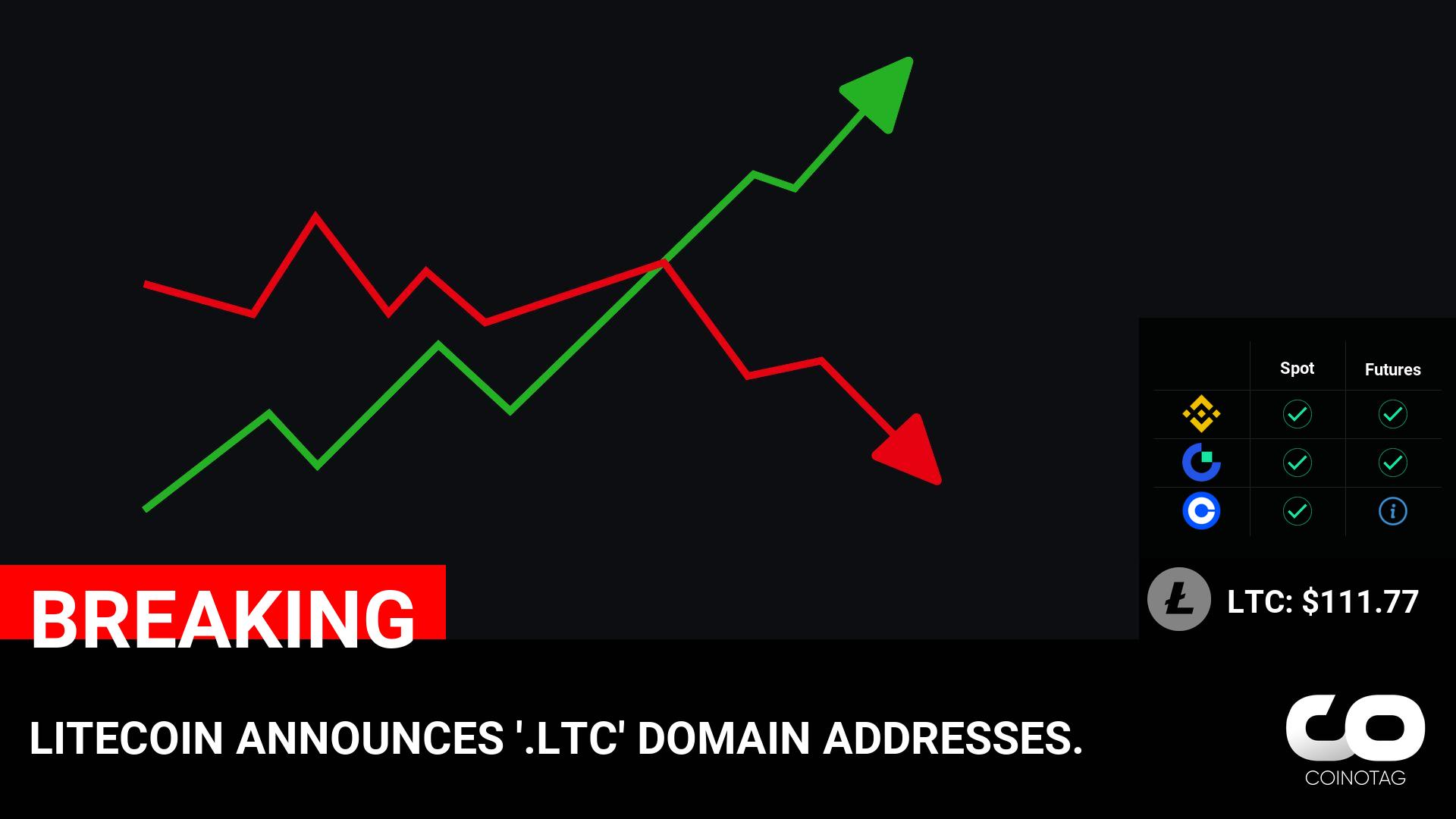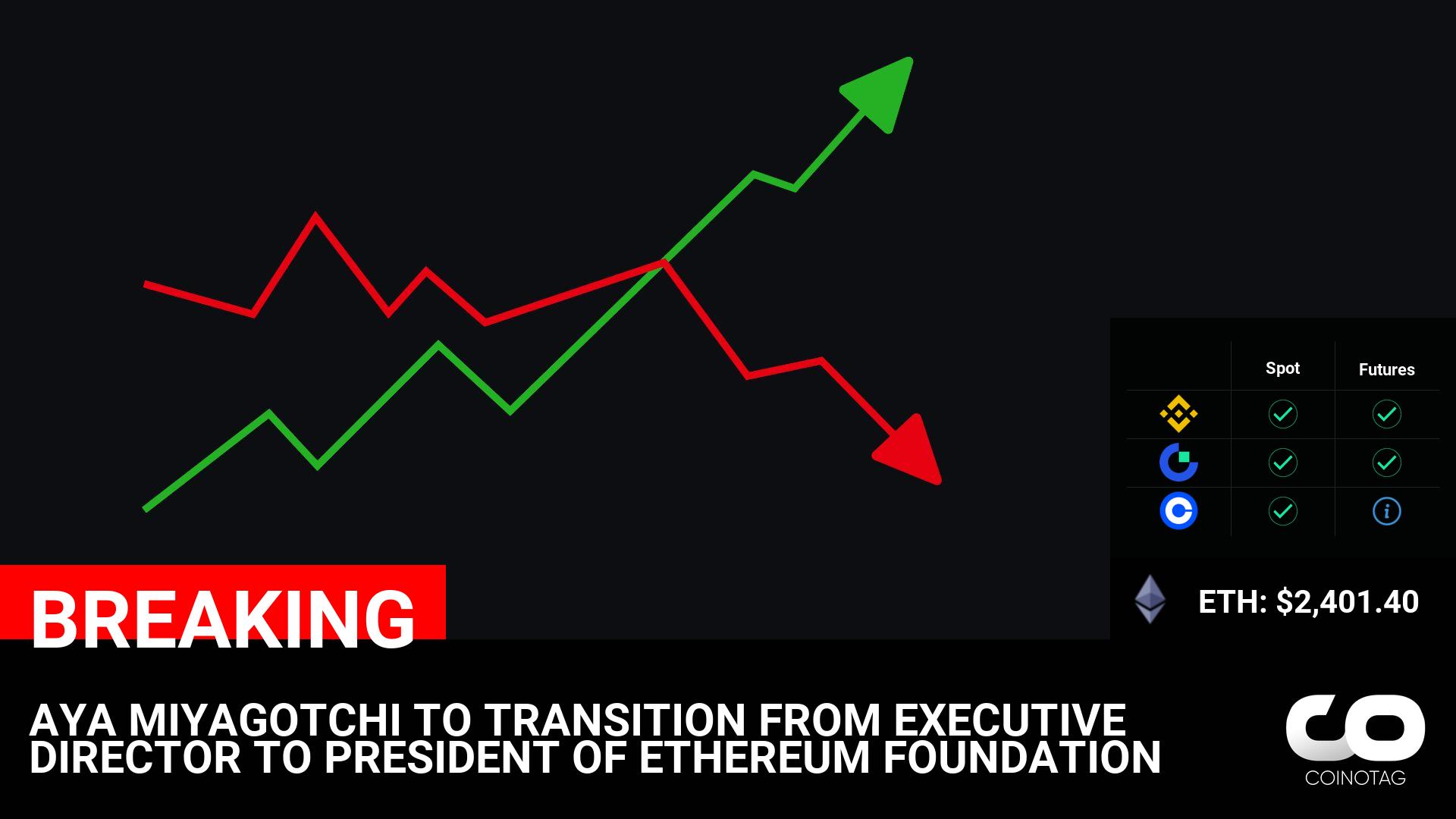
Key SHIB metric value soars, while entire crypto market turns red
U.Today
You can visit the page to read the article.
Source: U.Today
Disclaimer: The opinion expressed here is not investment advice – it is provided for informational purposes only. It does not necessarily reflect the opinion of BitMaden. Every investment and all trading involves risk, so you should always perform your own research prior to making decisions. We do not recommend investing money you cannot afford to lose.
Ethereum Foundation’s Aya Miyaguchi Leaving Executive Director Role

Ethereum Foundation Executive Director Aya Miyaguchi shared Tuesday that she would be leaving her position and would soon be transitioning to her new role as president at the organization. The news comes as the nonprofit goes through a leadership shake-up and as Ethereum has become less popular for new builders in recent months, with some even blaming Miyaguchi’s leadership as for why the blockchain’s token price is lagging behind other cryptocurrencies. “This new opportunity will allow me to continue supporting EF’s institutional relationships, and to expand the reach of our vision and culture more broadly,” Miyaguchi wrote in a blog post . The Ethereum Foundation is a nonprofit that supports the development of the Ethereum blockchain. Founded in 2014, Miyaguchi joined in 2018 and has been the executive sirector ever since. CoinDesk reached out to a spokesperson at the EF to find out who would fill the executive director position, but did not hear back in time for publication. Ethereum co-founder Vitalik Buterin wrote in a post on X that “every success of the EF - the steady execution of Ethereum hard forks, client interop workshops, Devcon, Ethereum`s culture and steadfast commitment to its mission and values, and more - is in part a result of Aya`s stewardship.” Read more: Ethereum`s Vitalik Buterin Goes on Offense Amid Major Leadership Shake-up U.Today

Bitcoin Price Analysis: BTC Dips Below $90,000 As ETF Sell-offs, Liquidations Dampen Sentiment
Bitcoin (BTC) and the crypto market plunged into the red after President Donald Trump announced the proposed tariffs against Canada and Mexico would come into effect in March. Consistent ETF outflows and mounting liquidations have also hampered investor sentiment, with Bitcoin down almost 7% and trading just above $89,000 at the time of writing. The crypto market cap is down nearly 7% and currently sits at $2.93 trillion. ETF Sell-offs, Liquidations, Drive Bitcoin (BTC) Below $90,000 Bitcoin (BTC) fell below $90,000 for the first time since November 2024, as concerns about a further decline escalated amid the ongoing sell-off in spot Bitcoin ETFs. As a result, BTC fell to an intraday low of $96,796 before recovering to its current level. The decline comes after another wave of outflows from spot Bitcoin ETFs. The ETFs have registered outflows of over $500 million on February 24 alone, as BTC dropped to $91,622. Spot Bitcoin ETFs have registered six consecutive days of outflows, with the Bitcoin price down over 7% since ETFs began their selling spree on February 18. Bitcoin ETFs have registered over $1.14 billion worth of cumulative net outflows during the two weeks prior to February 21, making it the highest two-week period of withdrawals since they began trading. Bitcoin’s correction has also raised concerns about the current rally’s sustainability. The decline comes despite political endorsements for the flagship cryptocurrency as the markets remain heavily influenced by macroeconomic factors. “Elevated interest rates and reduced global purchasing power have led to a noticeable decline in both open interest and spot inflows, underscoring the inherent vulnerability of Bitcoin to broader economic pressures.” Investor sentiment has also taken a hit due to the Bybit hack, with the exchange losing a staggering $1.4 billion. The hack is regarded as the largest hack in crypto history. The volatility following the hack resulted in $1.3 billion in crypto liquidations over 24 hours, according to CoinGlass data. BTC accounted for $523 million in liquidations. BTC’s decline has raised concerns among analysts. However, they point out similar conditions have been part of the organic flow of the crypto market cycle. Spot Bitcoin ETFs Have Shed $929 Million In February Spot Bitcoin ETF outflows have registered a sharp increase as investor sentiment took a hit due to adverse macroeconomic conditions. According to Farside Investors outflows from spot Bitcoin ETFs topped over $928 million since the first trading day in February. The outflows have coincided with BTC trading in a narrow range between $94,000 and $99,000 for most of February. BTC registered a decline over the weekend following the Bybit hack in which over $1.4 billion worth of ETH was stolen. Bearish sentiment carried over into Monday as the price dropped nearly 5% to $91,622. Even Strategy’s continued buying of BTC failed to inspire the market. The company announced it had acquired another 20,356 BTC on Monday and now owns just shy of 500,000 BTC . The purchase came after the company sold $2 billion in convertible notes to continue adding BTC to its balance sheet. BTC Slides As Investors Show Weakened Demand Bitcoin investor demand has registered a substantial slump over the past month, declining for the first time since September 2023. The drop in demand comes after a decline in active wallets and transactions, according to data from CryptoQuant. However, analysts maintain that BTC maintains a long-term bullish structure, suggesting that further downward pressure could result in an extended consolidation phase. A CryptoQuant analyst stated, “If uncertainty persists, we must consider the possibility of another prolonged consolidation phase, similar to what began in March 2024.” Bitcoin (BTC) Price Analysis Bitcoin (BTC) plunged over 7% in the past 24 hours as bears tightened their hold on the market. The flagship cryptocurrency declined to $91,622 on Monday as it tested the lower levels of its trading range. However, bearish sentiment intensified on Tuesday as the price plunged below $90,000, a key psychological level, and fell to an intraday low of $86,796. BTC remains entrenched below $90,000 and currently trades at $99,863. BTC has wiped out over $250 billion from its market capitalization, with Jeff Dorman, Chief Investment Officer at Arca, stating, “Crypto is just weak and has been for eight weeks. Equities, fixed income, and gold have completely shrugged off any data points that have been used to explain weakness. Only crypto is going lower. And that’s largely due to poor sentiment, exploitation from various memecoin failures, and lack of capital to support new token launches.” If BTC fails to reclaim $90,000, it could see a deeper correction that could drag the price towards $80,000. BTC was bearish for most of the previous week, starting with a marginal decline on Monday that took the price below $96,000 to $95,765. Selling pressure intensified on Tuesday as BTC dropped to an intraday low of $93,431. However, it recovered from this level to reclaim $95,000 and settle at $95,634, ultimately registering a marginal decline. The price recovered on Tuesday, rising nearly 1% and settling at $96,386. BTC continued to push higher on Thursday, moving past the 20-day SMA and settling at $98,251, registering an increase of just under 2% as analysts expected an imminent move to $100,000. However, that changed on Friday as the Bybit hack stunned the market. As a result, BTC endured considerable volatility before registering a drop of 2.10% to slip below the 20-day SMA and settle at $96,184. Source: TradingView The price recovered on Saturday, registering a marginal increase and moving to $96,478. However, bearish sentiment returned on Sunday as BTC fell to an intraday low of $95,111 before settling at $96,084 to end the weekend on a bearish note. BTC slumped nearly 5% on Monday, falling below key support levels to settle at $91,622. BTC fell below the crucial $90,000 level during the current session, with the price down nearly 3% and trading at $88,944. If BTC cannot reclaim $90,000, it would indicate buyers have been overwhelmed at this key level, leading to a deeper decline that could drag the price below $85,000. BTC must recapture $90,000 to maintain its trading range and prevent a decisive bearish turn. However, technical indicators suggest BTC has turned bearish, as seen in the MACD. The RSI has also plunged to 30, indicating that sellers are in control. Disclaimer: This article is provided for informational purposes only. It is not offered or intended to be used as legal, tax, investment, financial, or other advice. U.Today











